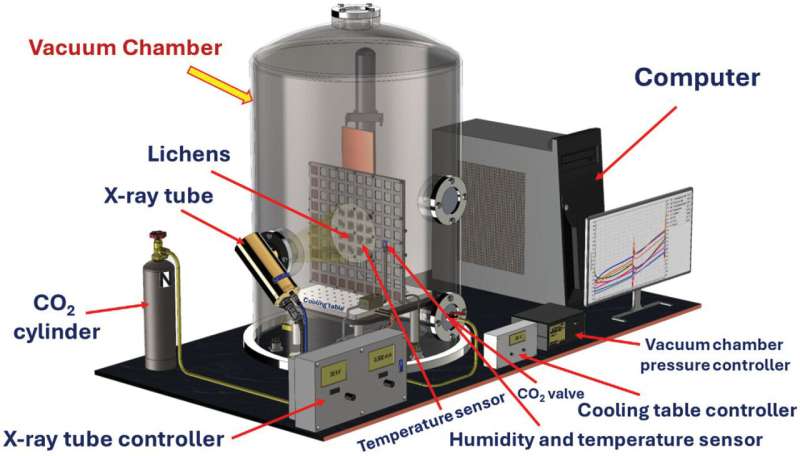
Published in the journal IMA Fungus, a new study highlights the potential for lichens to survive and function on the Martian surface, challenging previous assumptions about the uninhabitable nature of Mars, and offering insights for astrobiology and space exploration.
Lichens are not a single organism, but a symbiotic association between a fungus and algae and/or cyanobacteria known for their extreme tolerance to harsh environments such as the Earth’s deserts and polar regions. In this study, the fungal partner in lichen symbiosis remained metabolically active when exposed to Mars-like atmospheric conditions in darkness, including X-ray radiation levels expected on Mars over one year of strong solar activity.
A step towards life on Mars? Lichens survive Martian simulation in new study
Another view is that while life is good, the variety and diversity of life are important. A world rich with fish, trees, flowers, and butterflies is surely better than a planet with only grass and cows. In that case, directed panspermia runs the risk of contaminating other worlds. With this view, it may be ethical to seed the cosmos as a last resort to save terrestrial life, but not to expand the reach of Earth life beyond our solar system.
One day we might seed the universe with life. But should we?
Human driven panspermia.
I am on board that it is a good thing if humans can get to that point without destroying what is here first and that doesn’t look good.
A field known as synthetic biology has become one of the most highly anticipated in science. Its outputs range from golden rice, which is genetically engineered to provide vitamin A, to advances stemming from the Human Genome Project, which successfully mapped the entire human genome. Prominent voices in biotechnology have heralded it as the next wave of the future of innovation.
How to engineer microbes to enable us to live on Mars
I am less keen on using synthetic biology but it may be necessary.